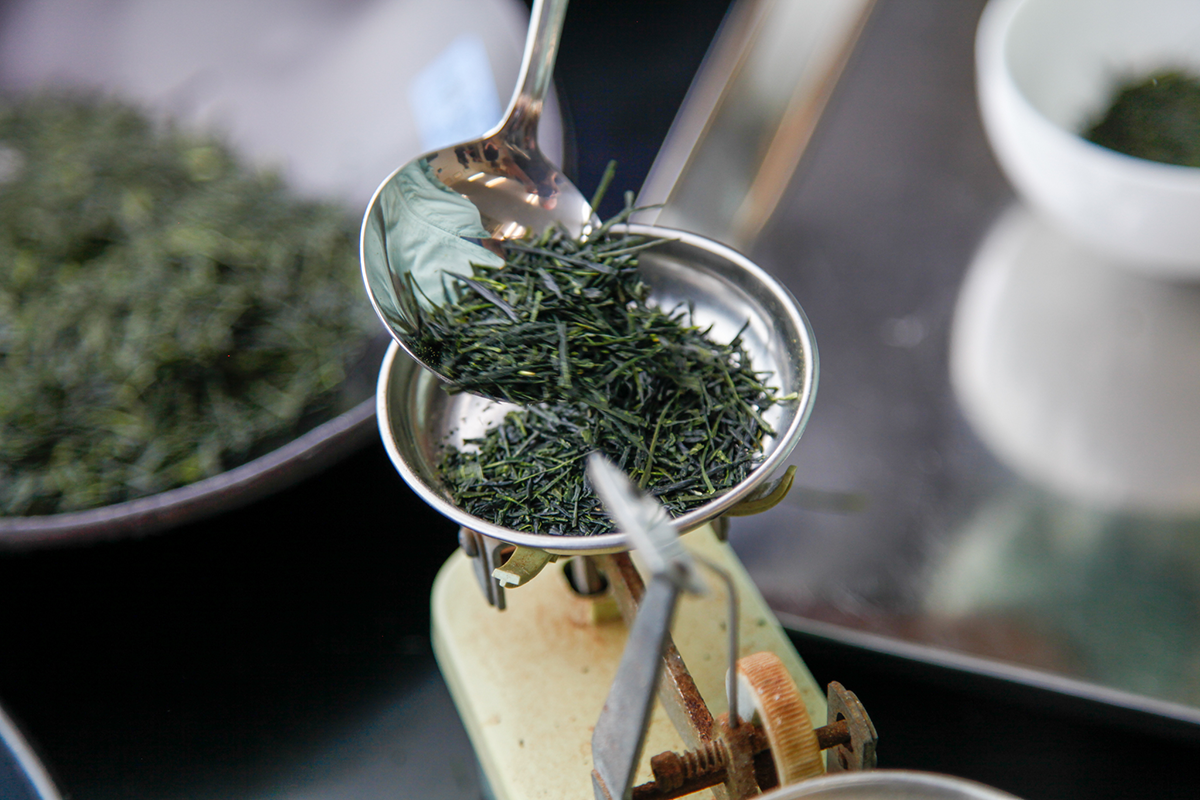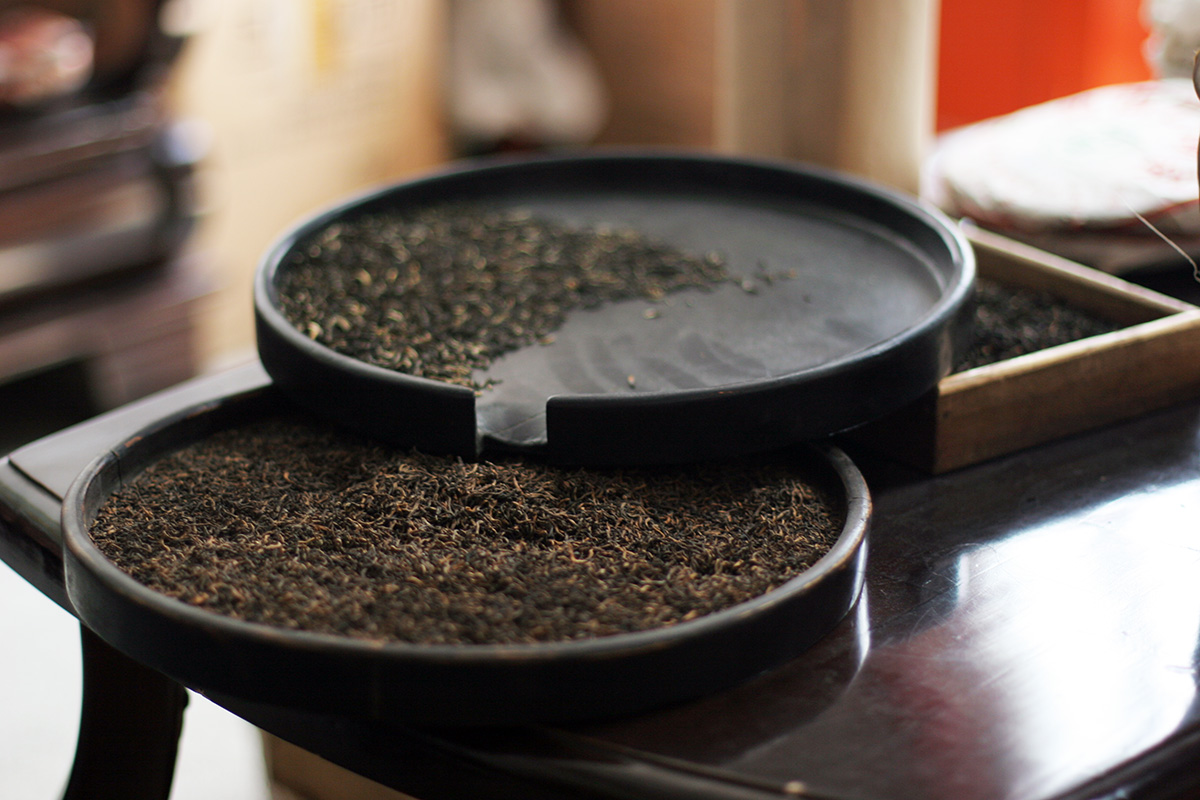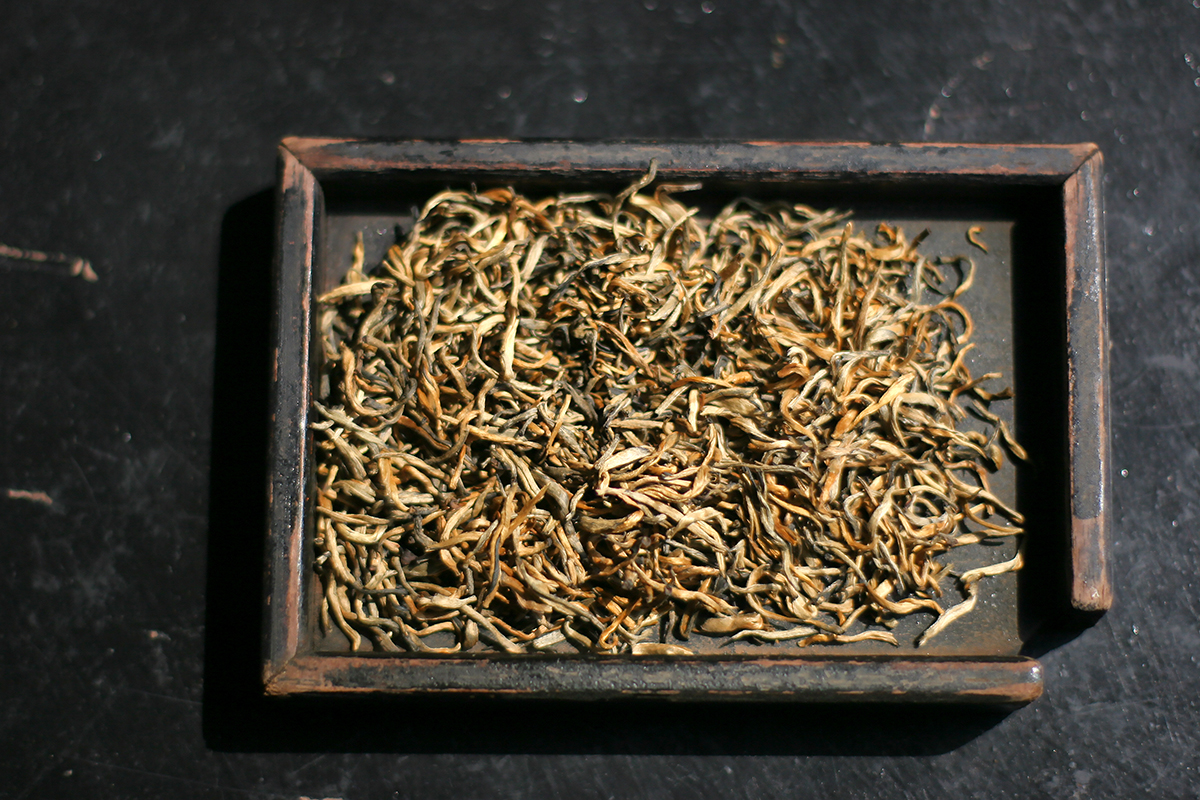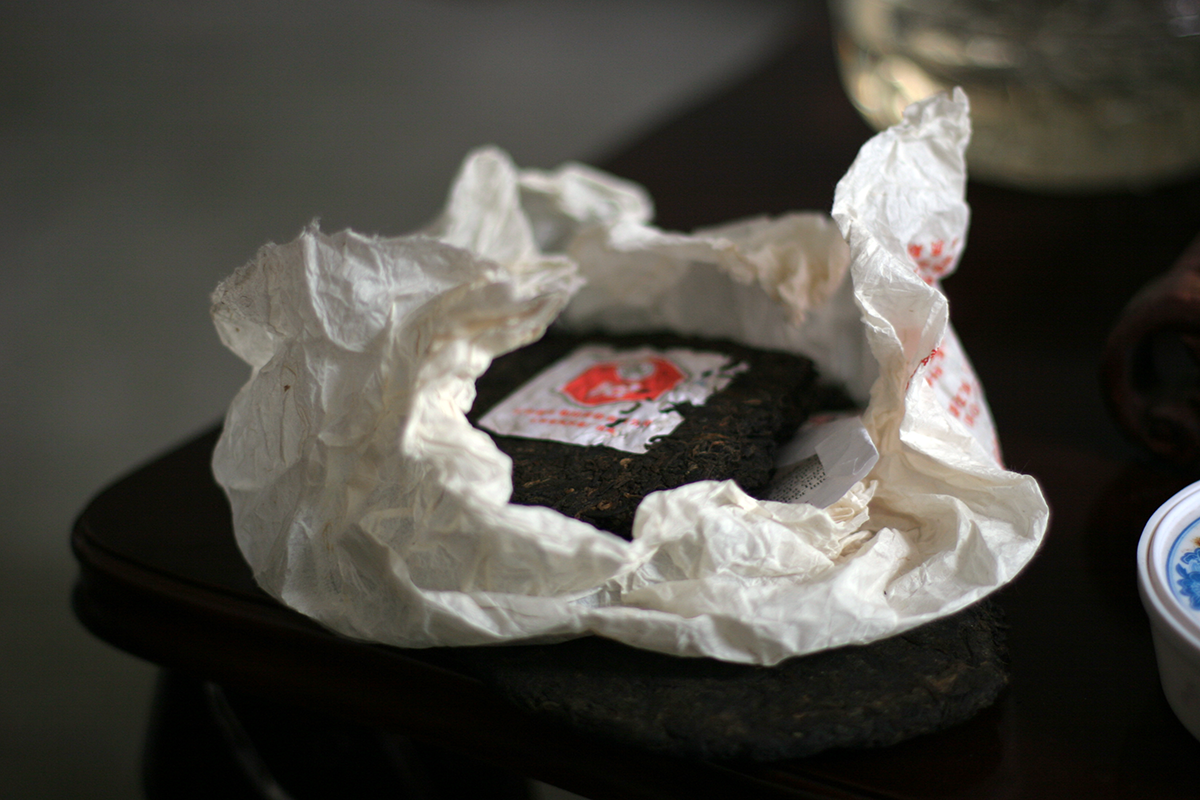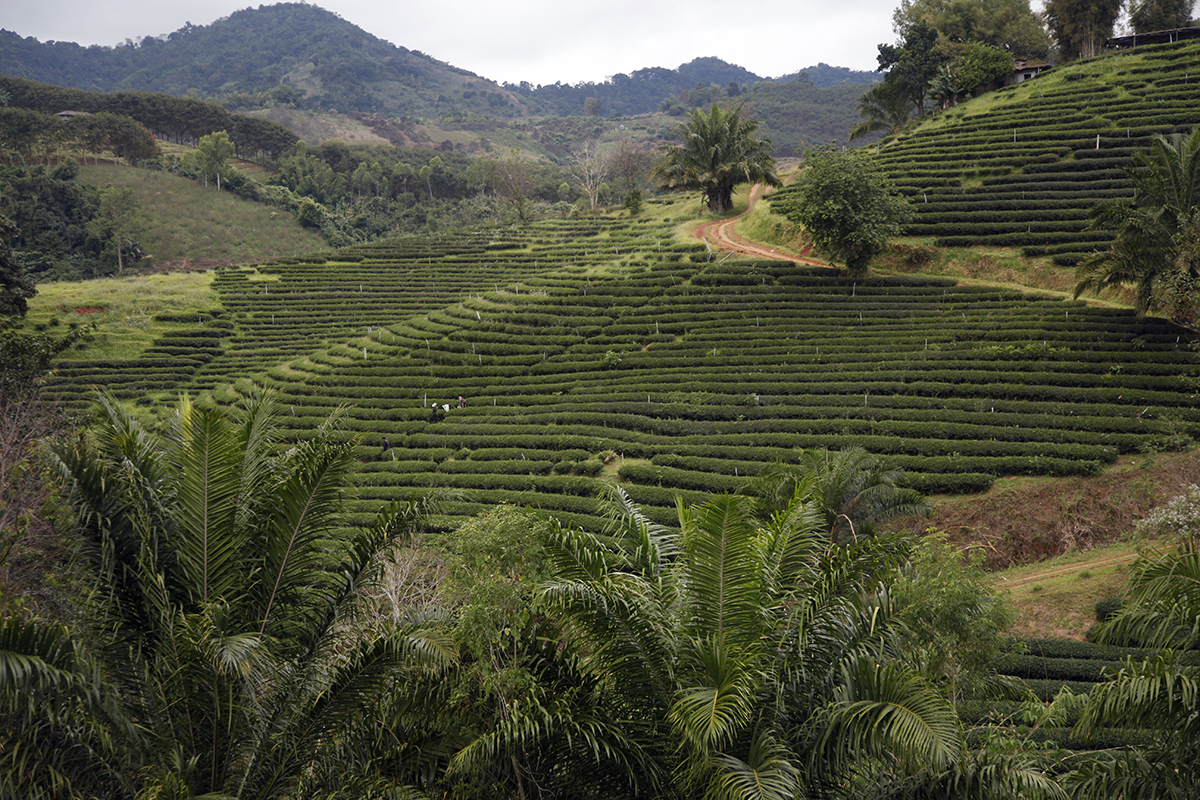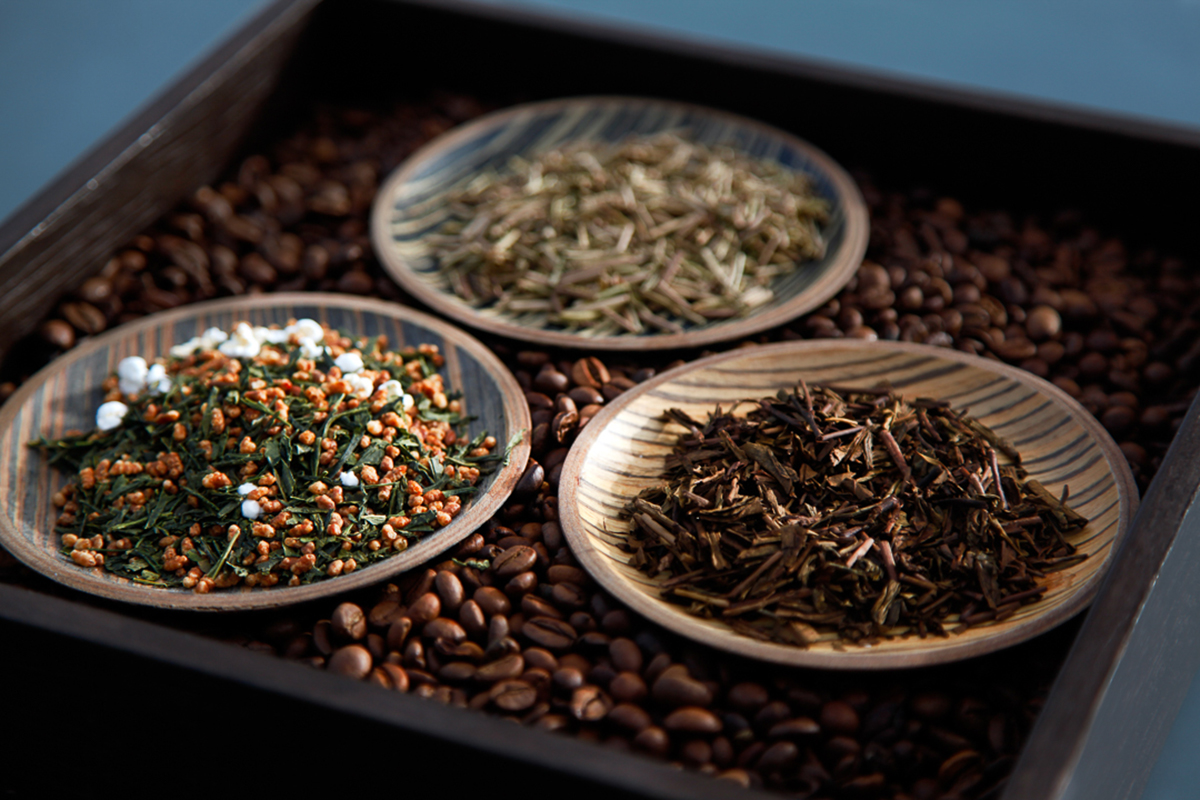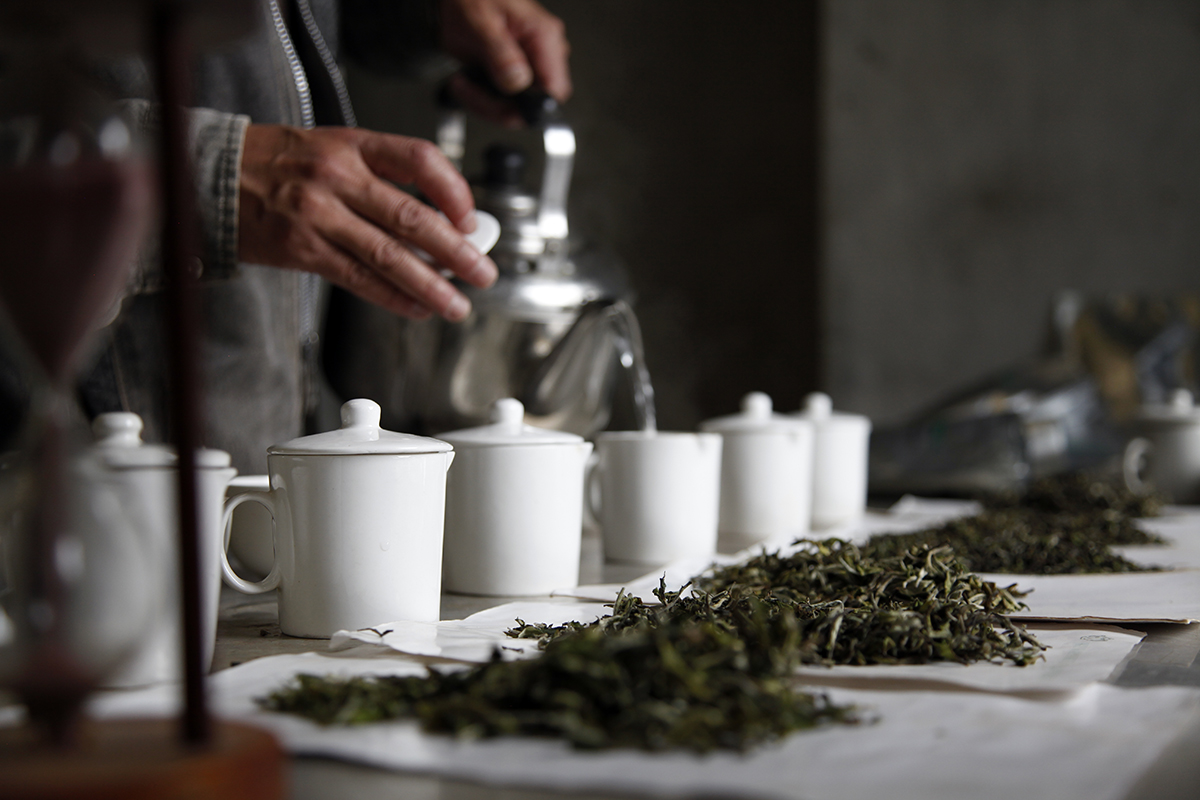Yesterday, I had a long chat with Jeewan Prakash Gurung, one of Darjeeling’s oldest planters. He has been in the tea business for a record 48 years! He welcomed me to his plantation in Seeyok and together we tasted teas and talked until it grew dark. I was impressed and moved by his words: “Tea is not a product, it’s a culture!” His pride shone through when he talked about himself and his fellow tea growers: “I’m proud of Darjeeling teas, they’ve made us what we are today.” On the winding road back to Mirik, as I looked out of the wide open window of the Jeep at the mountains in the misty night sky, I thought about his words and realised something important. For some people, it is enough to make tea and to shape the tea leaves, while for others it is the tea itself that has shaped them and made them who they are. This reminded me of Nicolas Bouvier’s quote: “You think you are making a trip, but soon it is making you.
Tea Tasting
The peaceful ryokan
Everyone finds happiness where they want it. I find it when I’m surrounded by nature, in places that are alive with silence. I enjoy crowds for a while, but in Japan, after experiencing once again the crush of people jostling to cross the streets in all directions at the famous Shibuya intersection, nothing pleases me more than to find myself far from the city, in a ryokan, a traditional Japanese inn. There, in the middle of nowhere, where I am attuned to the slightest sound and the materials that surround me – wood, rice straw, stone – I dissolve into the landscape and find my place among the trees, the breeze and the murmuring stream. With a bowl of tea in my hand, I close my eyes and slowly savour the powerful, vegetal infusion. I stay focused on the present moment. “We drink tea to forget the noise of the world,” wrote Lu Yu, the “Sage of Tea” as he is still known, and the author of The Classic of Tea.
Tea and hospitality
Taking a tea break can be beautifully simple. Here in the Egyptian desert, during the mint harvest, the workers gather a few sticks of fig wood and heat the water in a basic kettle that also serves as a teapot. A few minutes later, everyone savours the pleasure of being together.
Everyone has their way of preparing tea
When buying tea, it’s important to have information that allows you to prepare it in the best possible way in order to obtain the most flavourful and balanced tea to drink. So the recommended water temperature and brewing times marked on each pack are very useful. However, they aren’t definitive. Someone new to tea won’t prepare it in the same way as a connoisseur. For the first-time tea drinker, it’s a good idea to brew it a little longer, to really bring out the characteristics of that particular tea. And the more you know about a tea, the shorter the brewing time, even if it means using more leaves. So the water temperature and brewing times are not to be followed to the letter; rather, they indicate the maximum water temperature and maximum brewing time. Once you know that, you can do as you please and experiment with the preparation to get the tea just as you like it.
A tea for every season
So, it’s January, it’s cold outside, what tea should you be drinking? I recommend a dark tea (not to be confused with black tea), especially after that holiday period when the chances are you’ve overindulged. Because this deep, rich tea has been reputed for centuries for its digestive properties. Note, however, that this type of tea, also known as pu’er or pu-erh, undergoes post-fermentation. As such, expect your cup to develop aromas of moss, mushrooms, undergrowth, wet straw, along with notes of vanilla and liquorice as well as leather and other musky flavours. This incredible tea is simply perfect for this time of year and is good for us too. Let me know what you think!
Safety first
Just a few days ago, Léo and I had the pleasure of tasting a sensational tea sourced from southwest China. In fact, the variety was one of the famous ‘Yunnan buds’ that is going down a treat with tea lovers all over.
I thought it would be interesting to share with you the different stages of selecting a batch of tea.
Once the quantity we want has been decided, an order is placed. Because this is a small batch tea, it will be shipped by air. No sooner will the wheels touch the ground than a sample will be whizzed over to an independent lab for testing. Although not legally required to, Palais des Thés has made it policy to test any tea that has not been awarded French agriculture biologique certification, proof that is has been organically farmed. We are looking for over a hundred different molecules to confirm that the batch complies with European standards, known for being the most stringent in the world. Only if the tea passes muster will the leaves be distributed to our boutiques. It takes on average 4-6 weeks from when the tea is sampled to it being available to buy in store. A relatively long timeframe that Palais des Thés stands by because we understand the importance of guaranteeing food safety for the good of our customers’ health.
A walk in the woods
During lockdown, it can be easy to let ourselves go a bit. We might exercise less and put on weight. Could this be a good time to turn to tea? According to traditional Chinese medicine, one of the many properties attributed to our beloved Camellia sinensis is fat-burning. This remarkable quality is particularly true of dark teas, called Pu Erhs, with their powerful notes of undergrowth and humus. If you can’t take a walk in the woods, you can at least enjoy all the associated aromas in your cup – alongside those other supposed benefits.
Travelling in images
Travelling around the world is not one of life’s essentials, even when you have a job like mine. Despite the world health crisis, we’re receiving samples of tea produced on the other side of the world by farmers we know. We taste them straight away in our tasting room and choose the ones we want. In other words, the world of a tea researcher continues on its course even during these times of Covid-19. It’s a strange world though, one that has stopped us from moving around. So, when we grow nostalgic for travel, for those wonderful landscapes, those mountains and changing skies, there is nothing to stop us, after all, from transporting ourselves through the power of the image. Here, we’re in northern Thailand, not far from the Golden Triangle.
What tea should you serve a coffee-drinker?
At some point, I’m sure you’ve asked yourself what tea to serve an obsessive coffee drinker. Some people can’t envisage an alternative to their single-origin pour-over or flat white. From my experience in such situations, I suggest you offer teas with burnt notes (toasted or roasted). These aromas are foregrounded in three famous Japanese teas: Bancha Hojicha, Shiraore Kuki Hojicha and Genmaicha. All three are accessible and easy-drinking thanks to their roasted flavours. They are an ideal bridge between coffee and tea.
Things are hotting up!
We hear a lot about carbon footprints, and when we consider tea, we immediately think of transport, whether by sea or air. Yet when you drink your cup of tea, do you know the biggest factor in its carbon footprint? It is the energy required for heating the water. The use of your kettle has a much greater impact than the transportation of a few leaves that barely weigh anything. So, when you’re preparing your cuppa, if you want to reduce your carbon footprint, make sure you only heat the amount of water you actually need, and switch off the kettle at the required temperature. This is much more efficient than boiling twice as much water, or heating it too much and then leaving it to cool.

